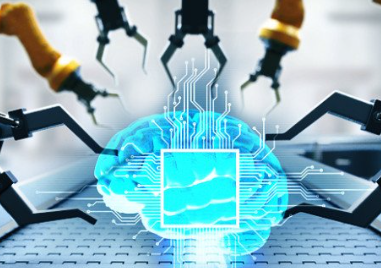AI Isn’t Good At Everything, So Strategic Implementation is Key
Despite how it’s revolutionizing nearly every aspect of our lives, there are plenty of things that artificial intelligence cannot do as well as humans. For instance, while it is less prone to errors than the average person, it can still make mistakes.
Pre-programmed robots are excellent at completing repetitive tasks with virtually no oversight. However, it’s important to remember that humans must tightly control any degree of autonomy to mitigate potential problems. This is why, although driverless trains have existed for a while, the automobile industry struggles to implement autonomous vehicles. It’s much easier to control an autonomous train when it’s constrained by railways; the comparative freedom of roads currently leaves too much room for mistakes.
In the manufacturing industry, the tolerance for error is extremely low. This means that while AI can be leveraged to improve the way the sector operates, it must be done strategically alongside skilled human workers.
7 Ways AI is Changing Manufacturing
1. Predictive Maintenance
Before the advent of AI, machine maintenance was put on a strict schedule to minimize the risk of unexpected breakdowns. Now, companies can instead utilize predictive AI systems that can customize the maintenance needs of each piece of equipment, creating an optimized schedule for individual machines that boosts efficiency without increasing costs.
Milling facilities often have a problem of spindles frequently breaking, slowing production and inflating operating costs. However, by integrating AI programs into the software, these factories can maintain up-to-the-minute monitoring to detect potential failure points before they cause problems.
2. Quality Assurance
Using AI to augment quality assurance practices not only produces a better end result but helps organizations determine the optimal operating conditions for the floor and determine which variables are most important for achieving those goals. This lowers the rate of defects and also drastically minimizes the amount of waste generated, saving time and money.
3. Defect Inspection
It is now possible to “outsource” the work of finding imperfections thanks to AI’s ability to visually inspect items much faster and more thoroughly than humans can.The right system can be trained on a relatively small number of images and then deployed to do the same work that typically takes dozens or hundreds of workers to complete. Additionally, it can conduct root cause analyses that allow companies to address underlying problems that may otherwise go unnoticed, increasing yield and optimizing production.
4. Warehouse Automation
Consumers are shifting their buying habits to e-commerce, which means warehouse efficiency is becoming a top priority for businesses that need excellent logistics to stay competitive.
5. Assembly Line Integration and Optimization
It takes more than simply collecting data from the manufacturing floor to truly optimize production and lower costs. The information must be scanned, cleaned up and structured in a way that allows for functional analysis. AI can quickly and easily sort and structure the entire facility’s aggregated data to give personnel an actionable, practical overview of what’s happening at each stage of the production process.













